IM Editorial Director Paul Moore not too long ago hung out with L&M Radiator, a Wabtec firm, the agency behind the worldwide premium mining radiator model MESABI®, to debate its market management and know-how focus.
L&M Radiator’s MESABI® model is the world chief in copper grommeted tube radiators for mining, particularly in giant mining haul vans but additionally a variety of different mining equipment, together with hydraulic mining excavators and floor drills, in addition to a variety of underground gear. Its market place has grown by way of its tried and trusted and infrequently customised warmth exchanger options for mining prospects, that has allowed it to construct up a singular loyalty due to their confirmed longevity and reliability.
L&M Radiator Pty Ltd Gross sales Supervisor Tony Coppins (left) and Basic Supervisor Richard Chapell (proper)
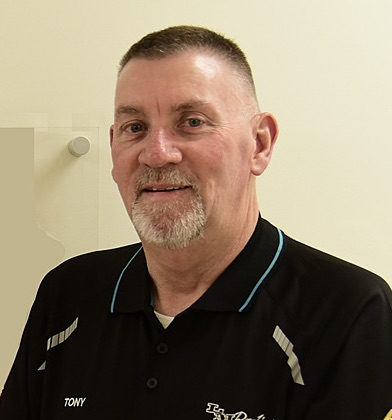
IM not too long ago talked to the corporate first hand in each Western Australia and Chile. In Western Australia, L&M Radiator Pty Ltd’s facility is situated in Welshpool, Perth, the place Richard Chapell, Basic Supervisor and Tony Coppins, Gross sales Supervisor, mentioned the market in some depth. The enterprise primarily based there and all through Australia is split 80% aftermarket and 20% OEM. The most important OEM dealt with immediately from Australia is Epiroc – for whom Perth handles MESABI® radiator provide in Australia but additionally Sweden, China and India. This consists of underground vans and LHDs. L&M Radiator does have a serious OEM enterprise worldwide, nevertheless it tallies with the place the client relies – for instance for mining vans, Komatsu, Caterpillar and Liebherr all manufacture within the US, so are provided by way of L&M Radiator’s HQ in Hibbing, Minnesota and its Yankton, South Dakota facility.
Aftermarket clever in Australia, L&M Radiator does service work for all the massive mining truck manufacturers – Caterpillar, Komatsu, Liebherr, Hitachi in addition to Epiroc and Sandvik underground gear – and it really works immediately with all the massive mining homes – together with BHP, Rio Tinto, Roy Hill and Fortescue within the Pilbara in addition to CITIC Pacific.
Chapell informed IM: “The client could or could not specify MESABI® when these machines are first constructed – however on the whole it’s first match anyway generally, together with most Caterpillar and Komatsu vans together with from the 793 to 798 and the 730E to 980E. This accounts for almost all of the mining market. These real MESABI® radiators are provided from L&M Mesabi services within the US in Hibbing, Minnesota or Yankton, South Dakota and fitted on the OEM areas in Peoria. Then MESABI® in Australia providers these merchandise as soon as they’re in operation in Australia. These vans are usually fully rebuilt each three or 4 years and we at MESABI® provide a completely licensed rebuild of the radiator. For Western Australia we try this ourselves 100% in Perth.”
Working with L&M Radiator means prospects have the reassurance of getting a top quality licensed MESABI® rebuild together with the standard components
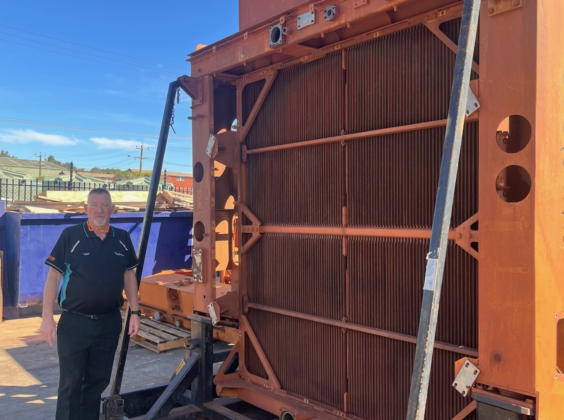
He provides: “Working with us means they’ve the reassurance of getting a top quality licensed rebuild together with the standard components. In India, Mongolia, Indonesia, and the Australian East Coast, L&M Radiator works by way of a community of recognised MESABI® service centres that perform the identical work to the identical normal reminiscent of PT Bhumi Phala Perkasa in Balikpapan. The identical applies in lots of different main mining markets reminiscent of North and South America. Past these service centres, the corporate additionally works with different radiator outlets, supplying full coaching and components to make sure they obtain the identical outcomes. All of those areas are additionally usually audited.”
As well as, if for no matter cause the truck being provided in Australia isn’t being provided in full by the OEM, or the radiator wants changing, the Perth facility additionally provides and suits new radiators or no matter main elements want changing.
Coppins stated on the corporate’s energy: “The market place for MESABI® in Australia has been pushed by the miners wanting our product on their fleets and actively specifying it. And that’s for an excellent cause – together with serviceability, longevity, high quality and reliability. The truth that these miners specify MESABI® – which is a premium product – means OEMs and sellers are much less probably to have a look at cheaper and decrease efficiency options over time.”
What’s the MESABI® distinction?
What are the MESABI® differentiators? Coppins: “Most likely probably the most important is that MESABI® radiators are a subject repairable product – which means all the pieces all the way down to particular person tubes. With a MESABI®, you’ll be able to merely plug the highest and backside seals and carry on working, till you may get the gear again into the store for upkeep. As a result of the copper tubes are individually replaceable, these broken tubes even might be eliminated and changed proper on the positioning of any incident like a collision. Whereas substitute instances differ, it takes many operations lower than one hour to switch a number of tubes. That is in comparison with a broken tube on a non-MESABI® radiator, which might trigger operations to stop for an indefinite period of time.”
MESABI® radiators are a subject repairable product – which means all the pieces all the way down to particular person tubes
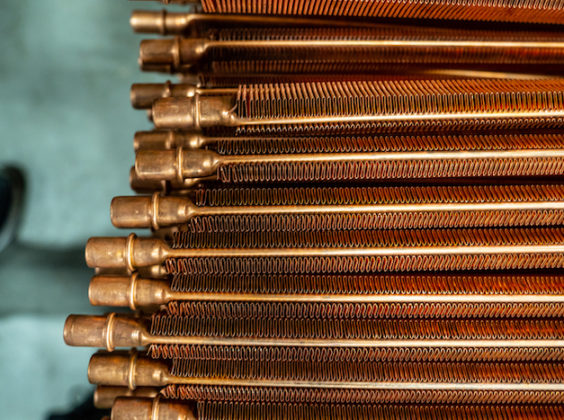
Chapell defined that MESABI® radiators might be introduced again to close 100% cooling capability again and again, whereas with all different mining gear scale merchandise it’s important to exchange the entire radiator. “MESABI® particularly provides a heavy responsibility radiator with copper cores for the mining business, which is suspended in a rubber seal, so the core cooling product doesn’t deteriorate by way of cracking and leaking inflicting failures. Cheaper radiators have a tendency to make use of all fabricated aluminium with no rubber help so are for probably the most half, unrepairable and should be changed wholesale. And it’s the downtime that outcomes that actually hurts the mining firms simply as a lot because the substitute value itself.”
A protracted and assured lifetime
What’s the life cycle of a typical MESABI® radiator then from new mining truck to finish of life? Chapell: “Take a Komatsu 930E – it’ll have been shipped from Peoria to Australia with a brand new MESABI® radiator – the engine module on these vans, which incorporates the radiator, all on the engine body, usually lasts about 30,000 hours within the Pilbara which is round 4 years. That comes out and a brand new module is put in so the truck can hold working. The used module will get transported to Perth the place the engine and alternator and radiator get taken off. The radiator involves L&M Radiator’s facility for restore, the engine goes to Cummins and the alternator goes to Wabtec.”
He provides: “The radiator is totally stripped and repaired, together with repairing any defects within the steelwork to the OEM’s newest specs. The radiator itself is overhauled by becoming all new rubber seals, however solely the MESABI® copper, aluminium or brass tubes that want changing get changed. However all of the tubes are eliminated and cleaned internally and externally. The body is painted, the radiator examined, after which it goes again into the market with a 36 month guarantee towards seal leakage. The MESABI® radiators go into use for the lifetime of the engine – because it is smart to coordinate with the engine life on this approach. However engines haven’t all the time lasted 30,000 hours – 20 years in the past it was extra like 20,000 hours. That is thanks first to engine enhancements reminiscent of to Tier 4 Closing variations, but additionally it’s about enhancements in servicing by mechanics and far more use of sensors and evaluation with predictive upkeep – reminiscent of utilizing oil evaluation to point out up any bearing materials – if one thing exhibits up the engine is taken out. At 20,000 hours the MESABI® radiator was really popping out too early and generally had not reached the top of the guarantee. At present it’s extra of a candy spot aligned with the brand new engine life capabilities.”
So what number of of those 30,000 hour rebuilds will usually be accomplished on a truck? Coppins: “In actual fact, in the event you take the 930E, not that many have been scrapped in Australia. They don’t simply rebuild the radiator and engine – additionally they rebuild the truck itself at common intervals. There are fairly a quantity up round 100,000 hours or extra of operation. Prior to now, a decade of operation and three rebuilds was seen because the norm – right now we’re extra like 4 or 5 rebuilds.”
At present the know-how exists to take a complete truck chassis aside and take away fatigued components, together with grinding down fatigued welds and changing with new excessive precision welding. So the chassis itself might be reborn, one thing that was not accomplished beforehand. The mixture of latest know-how and new considering. It’s additionally about main elements having had an OEM life expectancy which have been far surpassed safely and efficiently utilizing the newest evaluation and predictive upkeep applied sciences.
Options for the low emissions technology
The mining truck world is slowly seeing some strikes in direction of new applied sciences targeted on decarbonisation. Chapell: “At L&M Radiator we’re working with most of the main mining homes and new mining truck know-how gamers on how we may help them on this journey. The primary stage of that’s working with hybrid diesel-battery vans and ultimately we are going to probably see full battery vans. With the hybrid system we’re, at the side of the engine producers, offering options for the totally different cooling wants of those new programs. For hybrid vans and smaller battery packs the place the truck makes use of regenerative braking we expect we are able to provide what the business requires with our present know-how that scale back temperatures to ambient circumstances – however going ahead as battery packs get bigger and require quick charging options, they may want refrigerant sort cooling or use of particular cooling fluids, each of which we’re additionally engaged on.”
The nuGen FCEV mining truck, a transformed Komatsu 930E, was outfitted with a specifically designed MESABI® radiator
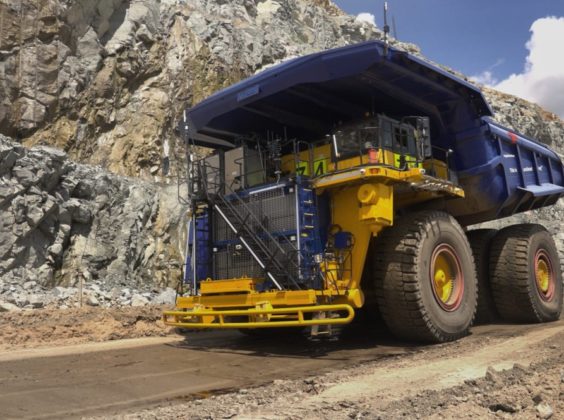
It’s because it’s not sufficient to chill these bigger batteries to ambient – they must be maintained at round 20°C whereas many mines within the Pilbara for instance have an ambient temperature of 40-45°C. “We have now designed our personal refrigeration unit to work with our radiators, for instance, to chill the battery packs but additionally the electronics related to them.”
Coppins added that L&M Radiator already has expertise with new technology, decrease emissions vans – the nuGen FCEV mining truck, a transformed Komatsu 930E with a battery pack and hydrogen gas cells, was efficiently trialled on the Mogalakwena platinum mine in South Africa and was outfitted with a specifically designed MESABI® radiator. L&M Radiator engineered an all-aluminium M-tube cooler for gas cell cooling compatibility with the present coolant on the 930E as brass and copper weren’t viable choices. Coppins: “The system additionally used an electrical drive fan system – one of many first to ever be used on a big mining haul truck. Plus the radiator is far greater to supply extra cooling – all of this was wanted as hydrogen gas cells emit quite a lot of warmth, particularly in direction of the top of their working life. The warmth rejection will increase because the powertrain ages. While you mix hydrogen and oxygen to make electrical energy, the exothermic response produces warmth and electrical energy, which should be eliminated, in any other case, the gas cell overheats.”
Chapell: “We have now the capability to fulfill the long run wants of subsequent technology decarbonised mining truck cooling programs. We’re working with all the key gamers to be sure that they’ve the cooling requirement solutions that they want for these new decrease emissions or internet zero mining truck designs. Plenty of battery electrical automobiles really require extra cooling than a diesel engine. With First Mode we labored with them to fulfill their wants for the package deal that was designed on the time.”
What about combustion engines operating on biofuels, hydrogen and even methanol – what about their cooling wants? Chapell: “Usually if you’re nonetheless operating an engine, the engine specs shall be comparable. We provide radiators to quite a lot of vans which have had engine repowers to a barely increased score – and our radiator in some circumstances can do the job once more with none alteration – so for these various combustion engines, we expect our radiator will proceed to be the reply to their wants no matter gas you might be placing by way of the engine. And if we do must bolster the radiator and make some modifications, as our design is so distinctive, we are able to simply make upgrades.”
Coppins and Chapell additionally stated that the corporate has labored with quite a lot of Komatsu truck repowers from Cummins HPI to Cummins MCRS engines bringing extra gas effectivity, decrease PM and longer life. Coppins: “On this case there was a cooling capability improve requirement. Our radiators are break up into two halves with a excessive temperature and low temperature circuit. The excessive temperature circuit was high quality however the low temperature circuit needed to go from two rows to 3 rows. So as a substitute of designing a complete new radiator, we had been in a position to make this variation to the package deal, permitting the client to reuse over 50% of the present radiator – the client was very joyful as they’re having to make a giant change with an all new engine, however didn’t need to have a completely new radiator. In different circumstances no modifications are wanted in any respect, in others extra delicate modifications like a brand new fan. In order acknowledged with the brand new decrease emissions vans, there are alternatives for us to make use of the present radiator design however with modifications and reconfigurations.” Other than the vans themselves, L&M can also be creating cooling packages for the quick charging programs, as they create quite a lot of warmth.
What of mining excavators?
Lastly, a word on excavators and engine cooling. Coppins: “Nearly all of giant hydraulic mining excavators have our cooling programs – together with most Komatsu and Liebherr fashions. All these excavators have important hydraulic programs which want cooling – and we do quite a lot of these within the aftermarket, however we’re rising our presence within the OEM market as properly. By way of the market evolving to cable tethered machines – many of those shall be tethered to banks of battery packs and even gas cells and battery packs which want cooling – with these linked to renewable energy sources like wind and photo voltaic. So, for a lot of electrical options, cooling shall be wanted each on the machine and off the machine. However at Mesabi® we’re used to designing and customising cooling packages in mining to swimsuit many alternative functions and so we are going to proceed to try this because the market evolves.”
Being a part of the Wabtec world community
What are the synergies of being a part of the Wabtec household? Chapell: “First off, they’ve a really in depth world presence and infrastructure which is able to assist to spice up our MESABI® presence. For instance, we’ve got been methods to help our mining prospects in India extra carefully – and Wabtec is already there on the bottom with services and areas. Additionally associated to that we’re working carefully with the Indian mining truck OEM BEML for his or her vans within the Indian market, so the Wabtec community helps us with that as properly. Plus, Wabtec may be very a lot a service pushed firm, so Mesabi® will probably be capable of improve its personal direct service community as properly, for instance in each North and South America.”
MESABI® may in Latin America
On the EXPONOR 2024 occasion in Antofagasta, Chile, IM additionally had the chance to speak to Mark Bausch, Gross sales Supervisor, L&M Industrial Radiator Sudamerica SpA.
L&M Radiator launched its personal MESABI® radiator manufacturing facility in Chile again in 2011 in Antofagasta. “We had been lively in Chile by way of third events, and moreover with a service accomplice, a Chilean firm that has been servicing radiators for over 50 years, who we nonetheless work with. At our plant in Chile we produce our flagship copper tubes for MESABI® radiators – and this offers us a a lot better potential to serve the native market quick – we are able to flip orders round in a day if we’ve got to. We’re versatile and we’ve got the entire uncooked supplies vital. Equally to the power in Perth, in Antofagasta we’re serving the aftermarket. Meaning responding to maintenance-based demand from the mines for an ultra-dependable radiator.”
IM Editorial Director, Paul Moore, with Mark Bausch, Gross sales Supervisor, L&M Industrial Radiator Sudamerica SpA, at Exponor 2024 in Antofagasta
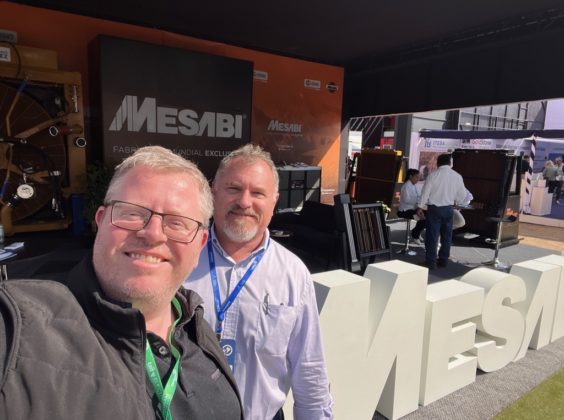
He stated this implies sustaining present MESABI® radiators throughout scheduled engine upkeep, however the facility additionally does quite a lot of conversions for purchasers from different manufacturers to MESABI®. “The straightforward reality is many of the options simply don’t final until the programmed engine upkeep intervals, whereas ours are in a position to comply with them carefully and in lots of circumstances transcend them. Our mantra is 2 engine lives – after the primary we after all examine the radiator, however we gained’t tear it down as there isn’t a want. The client already made the funding in uptime with our premium radiator, and they also will get these hours with no points as our supplies and our tolerances permit us to present that stage of backing to our product.”
That stated, the Chilean and Peruvian mines are a problem – the bulk function above 3,000 m and a few of them above 4,500 m with temperatures starting from –20°C as much as +35°C. The acute altitude means the gear requires way more horsepower than at sea stage. Many vans are fitted with excessive altitude kits to keep up efficiency however nonetheless they’re pushing engines to their absolute limits because the operators nonetheless wish to maximise tonnage. Bausch: “When utilizing a non-MESABI® radiator/aftercooler mixture, even a small aftercooler leak will generate a jet of air at super-heated temperature that is sufficient to deform the metallic in these coolers. We have now seen prospects which have misplaced 9 engines on this method. Our resolution is changing into the norm in Chile and Peru. New vans arrive in South America with a MESABI® radiator already fitted. On the first engine rebuild or standard non-MESABI® aftercooler failure, we are going to match two strong MESABI® aftercoolers. Our gear is designed and constructed to resist that atmosphere.”
As in Perth the Chile enterprise is aftermarket – not OEM enterprise – which is primarily carried out by L&M Radiator within the US. And equally to Australia, in Chile L&M is principally working with the mines immediately and by way of service suppliers who can present MESABI® built-in plug-and-play cooling modules, website providers and programmed overhaul service at regional centres. “In Chile we’ve got six MESABI® service centres operated by third social gathering firm Radiadores Gómez. In Peru, our service accomplice is Worldwide Wheel SAC. In Brazil, there are three service companions. Radiadores Nacional covers the northern Carajas area. Radiadores Liberio and Penachin Radiadores cowl the south/southeast.”
MESABI® radiators are used on Komatsu and Liebherr vans in Chile and Peru in addition to most Caterpillar and Hitachi vans, together with the Cat 794, 797 and 798 fleets, plus L&M Radiator radiators provides MESABI® conversions for excavators together with many of the Hitachi fleet in South America. A few of the giant 797B mechanical drive vans in Chile are actually utilizing a hybrid of the confirmed MESABI® BOSS® brass tube which is very corrosion resistant and suits that software – yet one more instance of MESABI® case by case customisation.
Bausch equally talked in regards to the MESABI® distinction: “Sure there are firms seeking to compete with us and imitate our merchandise. Their tubes don’t look or really feel unique and usually are not performing. When it comes time to overtake an imitation, these radiators or at the very least many of the tubes inside them, get scrapped. They could look comparable at first look, however they’re unable to repeat our materials or our high quality processes. Mines demand real MESABI® for good cause. They know they’ll get 30,000 hours plus out of each one among our radiators and that the tube substitute ratio at overhaul shall be very low, particularly if we’ve got labored with them to fulfill their particular wants.”
On radiators for subsequent technology vans, L&M at EXPONOR 2024 displayed a smaller model of the radiator design it produced for Anglo American’s FCEV truck at Mogalakwena, to point out the a number of programs concerned together with a normal radiator with coolant but additionally a brilliant refrigeration unit that’s below excessive strain; then you may have a warmth exchanger which permits heat fluid to combine with tremendous cooled fluid to handle the liquid temperature that’s flowing by way of the remainder of the system.
Bausch: “And that is related to batteries or gas cells – in both case this enables us to maintain the working temperature inside a really tight window. We additionally should take into account the extreme vibration that comes with working in mining – that’s the place MESABI® versatile seal know-how vastly outperforms welds – and is one other space the place we’ve got distinctive expertise and IP.”



